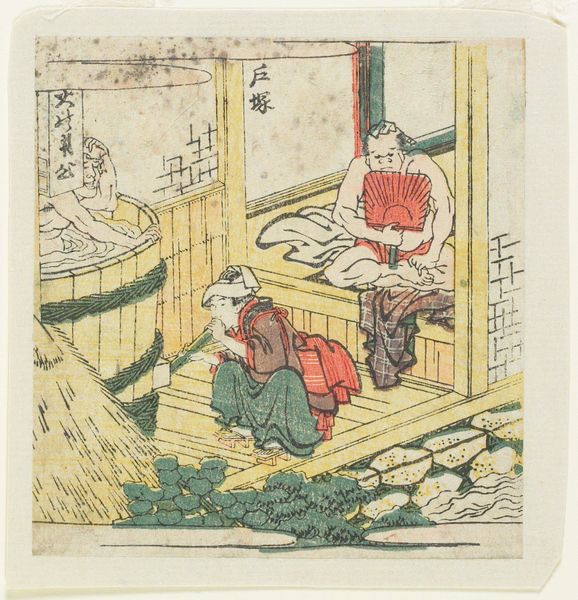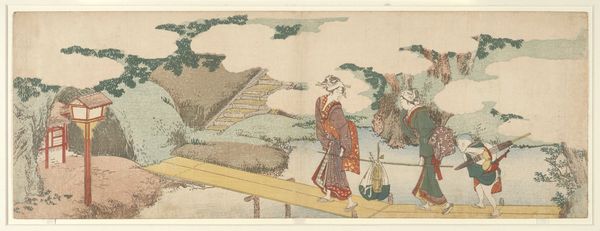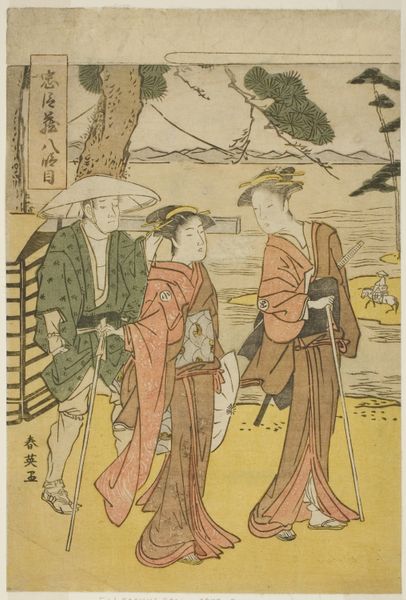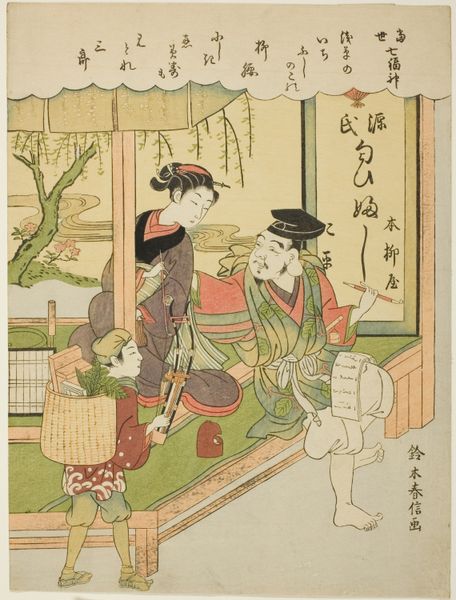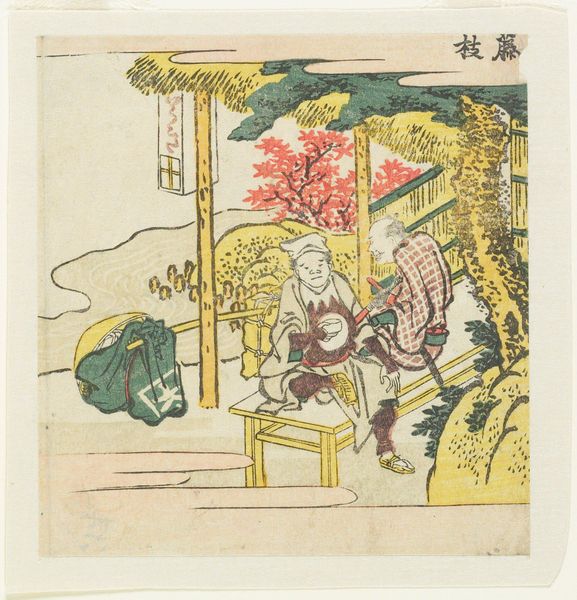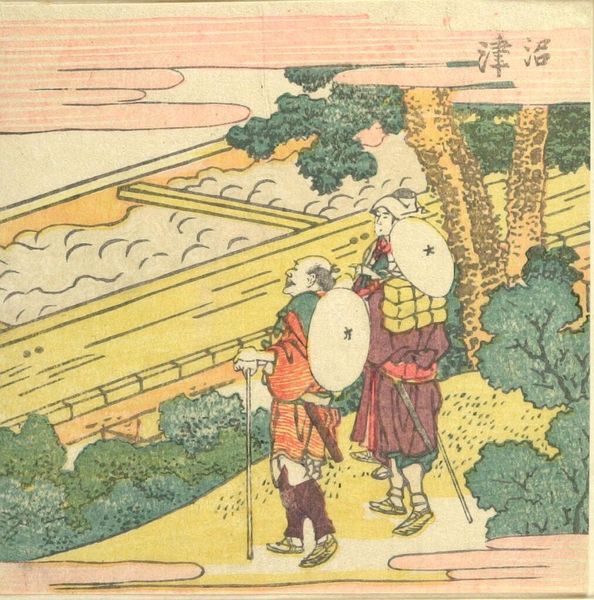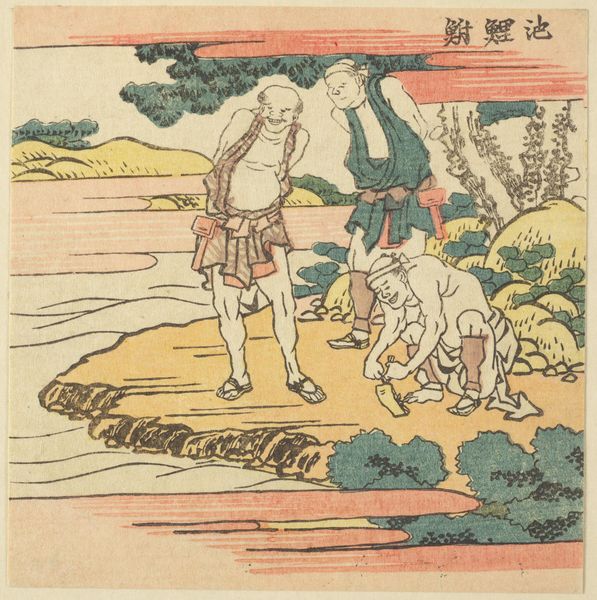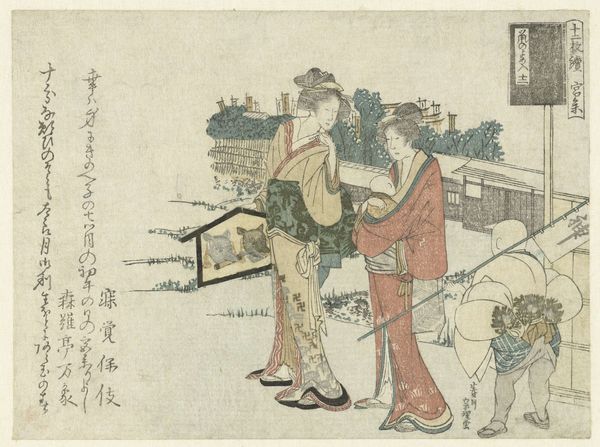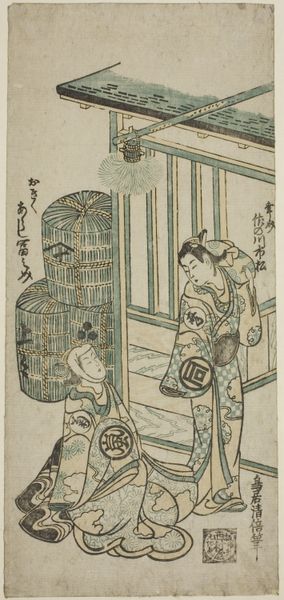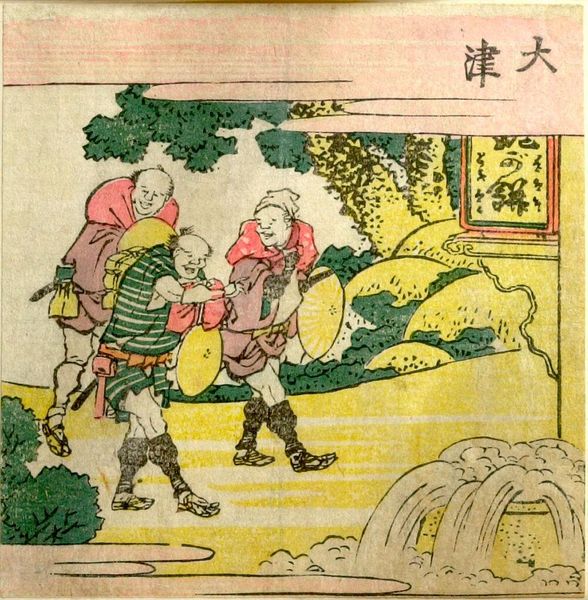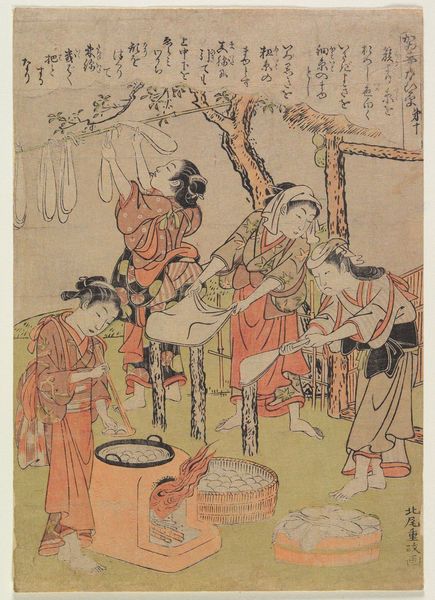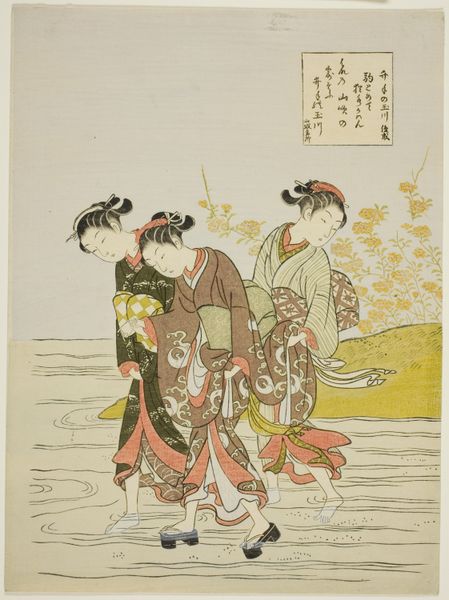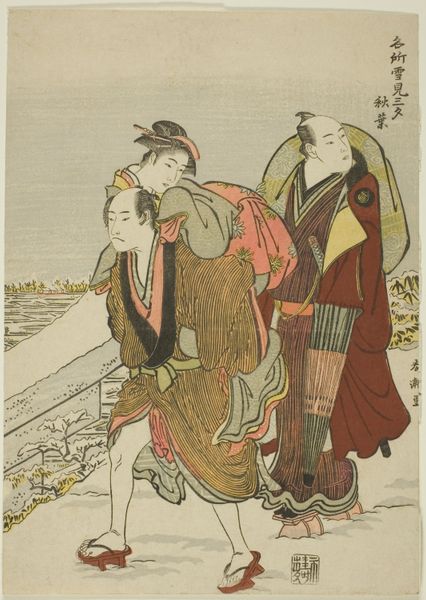
print, ink, woodblock-print
# print
#
landscape
#
ukiyo-e
#
japan
#
figuration
#
ink
#
woodblock-print
#
calligraphy
Dimensions: 4 5/16 × 4 1/8 in. (11 × 10.5 cm) (image, square koban)
Copyright: Public Domain
Editor: So, this is Hokusai's "Hiratsuka," made around 1810. It's a woodblock print in ink and color, and I find it so peaceful. What's striking to me is the ordinary scene rendered with such care. How do you interpret this work, looking at it from your perspective? Curator: I see here a fascinating confluence of factors regarding production. Ukiyo-e prints like this were, in essence, popular commodities. While Hokusai provided the artistic vision, a whole workshop of block carvers and printers were instrumental in its creation. Look closely at the crispness of the lines – consider the labor involved in carving that delicate keyblock from cherry wood. How does thinking about this process shift our understanding of Hokusai’s role? Editor: That's fascinating! It makes me think less about the 'genius' of a single artist and more about a collaborative system. But does focusing on production diminish Hokusai's individual artistry? Curator: Not at all! It contextualizes it. Think of the materials: the paper itself, likely made from kozo fibers, dictates the absorption of the ink. And the pigments! Their availability, their cost, would all have shaped Hokusai's palette. Consider the potential consumers – what were their tastes and economic constraints, and how might those influence the choice of subject and style? The art isn't just the picture but an end-product shaped by materials and demand. Editor: I hadn't considered the economic aspect of the pigments, for instance. It reframes my understanding to think of these artisans responding to very real-world production constraints. Curator: Precisely. Thinking about materiality and production roots the aesthetic experience in a concrete, socio-economic reality, breaking down the artificial barriers often erected between art, craft, and commerce. Editor: Thank you! I think I’ll be paying a lot more attention to the materials from now on, not just the image itself. Curator: And I hope you'll keep questioning who benefits from these modes of art production. Who profits? Who remains anonymous?
Comments
No comments
Be the first to comment and join the conversation on the ultimate creative platform.

